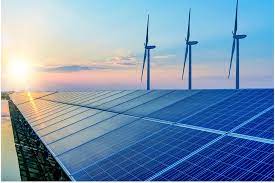
You flick the switch. The lights come on. Fridges hum, air con kicks in, and the EFTPOS system boots. Routine stuff. But have you ever stopped to ask when it’s costing you the most?
Quick answer? Peak energy times for most Australian businesses occur between 3pm and 9pm on weekdays — when demand on the power grid is highest. These hours come with higher electricity rates, and without knowing it, many retailers end up overspending during these periods. The fix? Timing your usage smartly to reduce retail store energy bills.
Let’s break this down into what you need to know — and do.
Why do energy providers charge more during peak times?
It comes down to basic supply and demand. During peak hours — typically in the late afternoon and evening — more homes and businesses are drawing power at the same time. That drives up strain on the grid, triggering the need for costlier energy generation.
Peak pricing isn’t a penalty. It’s a price signal. Providers are trying to incentivise users to shift their energy use outside of those congested hours.
For small business owners, that means the same 10kWh you use at 5pm could cost significantly more than if you used it at 10pm.
What are typical peak, shoulder, and off-peak hours in Australia?
While times can vary slightly by energy provider and region, here’s the general breakdown:
| Time of Day | Rate Period | Typical Hours |
|---|---|---|
| Peak | Highest rate | 3pm – 9pm (weekdays) |
| Shoulder | Medium rate | 7am – 3pm & 9pm – 10pm |
| Off-Peak | Lowest rate | 10pm – 7am (daily) |
Some plans also consider weekends and public holidays off-peak entirely, offering big opportunities for load shifting.
How do peak times affect your electricity bills?
Let’s use a real example.
Say you own a boutique gym. You run classes from 5:30am to 9pm, and your air con, fans, sound system, and lights run most of that time.
Now, imagine you’re consuming 15 kWh per evening between 4pm and 9pm — all charged at peak rates of 40 cents per kWh.
That’s $6 a day, just during peak. Over 30 days? That’s $180/month, or over $2,000/year, for that peak window alone.
If you could shift even half of that load outside peak times — or automate systems to throttle back — your energy spend could drop by hundreds annually.
What kind of businesses are hit hardest by peak rates?
Some businesses naturally operate during high-cost windows. But those with flexible scheduling or high overnight power use are better placed to adapt.
High-impact industries:
- Retail stores open into the evening
- Cafés and restaurants with dinner service
- Gyms and yoga studios with post-work classes
- Hairdressers and beauty salons with after-hours appointments
- Laundromats or dry cleaners running hot water systems through the day
Even if your business must operate during peak windows, there are still ways to minimise how much power you’re using during those hours.
What strategies help avoid peak charges?
The goal isn’t to shut everything down at 3pm. It’s to get smart about what’s running — and when.
Here are real-world strategies businesses are using today:
1. Pre-cool or pre-heat your space
Run HVAC during shoulder hours, then maintain the temp later using insulation or fans.
2. Stagger appliance usage
Don’t run the dishwasher, dryer, coffee machine and hot water system all at once.
3. Schedule non-urgent tasks
Move washing, ironing, or baking prep to early mornings or late evenings.
4. Use smart timers or load controllers
These automate appliances to run during off-peak hours — even while you’re asleep.
5. Upgrade lighting and signage to LED
They consume less and produce less heat, reducing HVAC load too.
A bakery in Ballarat cut 18% off their energy bill just by rescheduling ovens to preheat outside of peak time and installing a night-rate timer on their refrigeration units.
Should you be on a time-of-use tariff?
That depends on how and when your business uses power.
A time-of-use (TOU) plan means your rate changes based on the time of day. It can work in your favour if:
- You can shift big energy loads to off-peak
- Your business is closed during peak hours
- You already use the bulk of your energy overnight or early morning
But if you’re operating heavily during 3–9pm, a flat rate might be more cost-effective — even if the rate per kWh seems higher.
Talk to your provider. Better yet, analyse your smart meter data to see your daily load curve.
FAQ: Peak Energy for Aussie Businesses
Q: Can I find out my business’s actual peak usage?
A: Yes — most providers now offer detailed usage reports via smart meters. You can view hourly patterns online.
Q: Are there apps that track peak times in real time?
A: Absolutely. Apps like Energy Made Easy or your provider’s portal show live rates and usage data.
Q: Will solar panels help reduce peak-time costs?
A: Yes — especially if your business is open during the day and consumes the energy you generate onsite.
Final thought
Most business owners wouldn’t dream of paying triple for inventory or rent. Yet many do just that with electricity — simply because they haven’t considered when they’re using it.
By understanding peak energy times, you give yourself the power to rethink when equipment runs, when the air con kicks in, and when tasks get done.
For retail especially, these tweaks can mean the difference between treading water and building real margin. Because when you’re able to reduce retail store energy bills without compromising service or comfort, everyone wins — including the planet.
